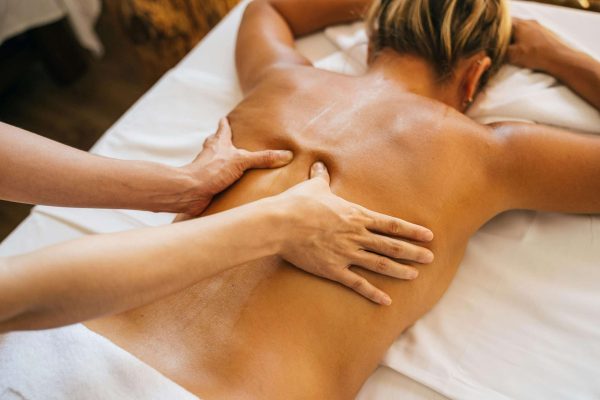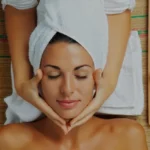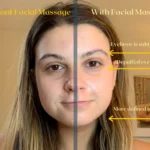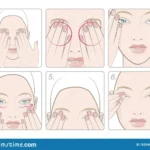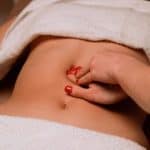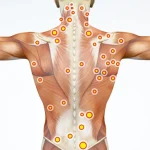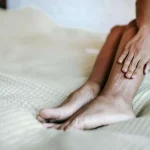It can be difficult to unwind and relax after a long and stressful day. Massages are an excellent way to do just that. To help you ease into a state of relaxation, this article will provide tips and tricks for how to do a relaxing massage. From the best massage techniques to the perfect massage oil, you’ll be able to give yourself or a loved one a massage that will help them feel completely relaxed.
Benefits of Relaxing Massage
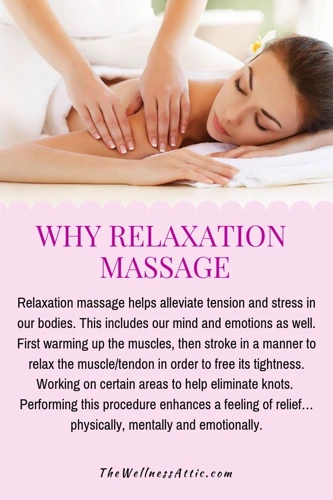
| Physical | Mental |
|---|---|
| Increased circulation | Reduced stress and anxiety |
| Lower blood pressure | Improved sleep |
| Reduced muscle tension | Increased mental clarity |
| Improved range of motion | Greater emotional stability |
Relaxing massage offers a variety of physical and mental benefits. Physically, it can help improve circulation, lower blood pressure, and reduce muscle tension. It can also improve range of motion. Mentally, it can help reduce stress and anxiety, improve sleep, and increase mental clarity and emotional stability.
Preparing for the Massage
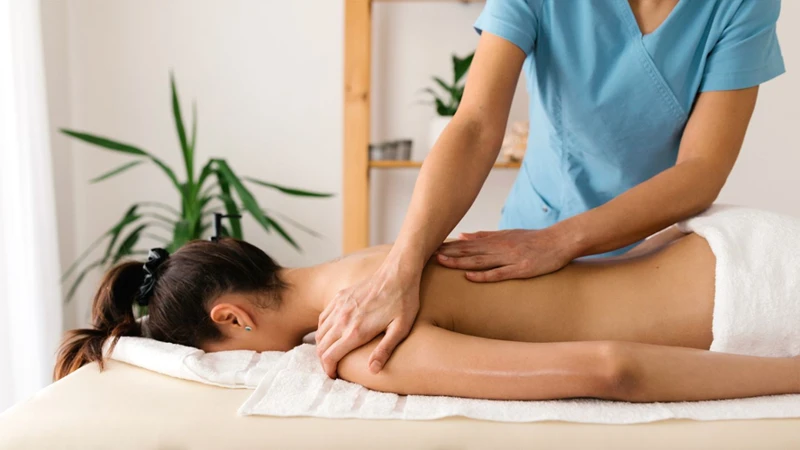
Gather Supplies
Massage oil, towels, and a comfortable space are essential for a relaxing massage. Massage oil helps protect your skin from the heat of your hands and keeps them from sticking. Towels help keep the massage area clean and absorb any excess oil. Lastly, the massage area should be comfortable for the recipient and provide enough space for the masseuse to move around freely.
Set Up the Massage Area
Start by finding a comfortable spot in your home, such as on a bed or a massage table. If using a massage table, make sure it is stable and secure. Place a towel on the massage surface to provide a clean environment and protect the surface. Place a second towel nearby to use if needed. Place a bottle of massage oil within easy reach of the masseuse. Lastly, make sure the area is well lit and comfortable temperature.
Performing the Massage

Begin with Warm-up Strokes
Start the massage with gentle strokes, using the fingertips or palms. This will help your partner relax and allow them to begin to let go of tension.
Use Firm Pressure
Once your partner has become comfortable, use firm pressure. Move your hands in circular motions to massage the muscles, applying just enough pressure to give a good massage.
Focus on Areas of Tension
During the massage, focus on areas where your partner is holding tension. These areas may include the neck, shoulders and lower back. Use firm pressure to help relax the muscles and release tension.
Use Long Strokes
Use long, sweeping strokes to help your partner relax. Move your hands in a slow, repetitive motion to help the body relax and release tension.
Massage the Head and Scalp
For an extra relaxing experience, massage the head and scalp. Use gentle pressure and small, circular motions to massage the head and scalp.
Finish with Gentle Strokes
When the massage is complete, finish with gentle strokes. Use the fingertips or palms to give a gentle massage that will help your partner relax and wind down.
After the Massage
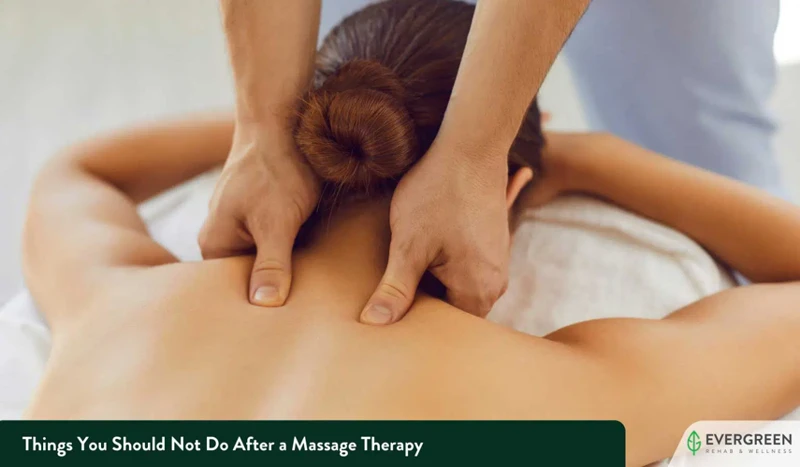
- Take Care of Yourself: Once the massage is complete, take the time to relax, drink some water and rest. This will help you to absorb the benefits of the massage and allow your body to heal.
- Stay Hydrated: Drinking plenty of water after a massage will help to flush out any toxins that were released during your massage.
- Stretching: Stretching can help to reduce any stiffness or soreness you may feel after your massage. It will also help to reduce any potential muscle pain.
- Avoid Alcohol: Avoid drinking alcohol or taking any other drugs, as this can interfere with the healing process.
- Follow Up: Follow up with your massage therapist or doctor to discuss any areas that need special attention or need additional massage sessions.
Tips for Enhancing Relaxation
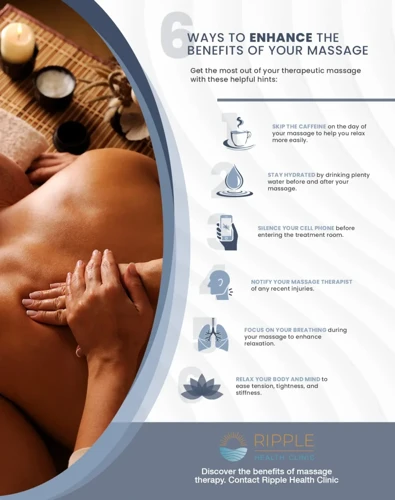
| Tip | Description |
|---|---|
| Set the Mood | Create a relaxing atmosphere with soothing music, candles, and low lighting. |
| Use Essential Oils | Aromatherapy can help relax the body and mind. Choose scents like lavender, chamomile, or sandalwood. |
| Start with Light Pressure | Begin with light pressure on the back, shoulders, and neck. Gradually increase the pressure as the body relaxes. |
| Focus on the Breath | Encourage your partner to focus on their breathing. Slow, deep breaths can help the body relax further into the massage. |
| Slow Down Movements | Use slow, deliberate movements to encourage relaxation. Movements should be fluid and rhythmic. |
| Respond to Signals | Pay attention to your partner’s verbal and nonverbal cues. If they indicate that the pressure is too much, adjust accordingly. |
| End with Gentle Touch | Gradually reduce the pressure until the massage is complete. End with gentle strokes or light touches. |
Safety Considerations
- Keep the pressure light: Pressure should be gentle and light, as too much pressure can cause discomfort and even pain.
- Be aware of allergies: Check with your partner before using any massage oil or lotion, as they may be allergic to certain ingredients.
- Sanitize your tools: Before and after each massage, you should thoroughly sanitize all tools you are using, such as massage oil and massage stones.
- Avoid sensitive areas: Avoid massaging sensitive areas such as the face, neck, and groin, as these can cause discomfort and even injury.
- Pay attention to the body’s cues: Pay attention to your partner’s body language throughout the massage, and stop if they are uncomfortable.
Frequently Asked Questions
What Type of Massage is Best for Relaxation?
Swedish Massage – Swedish massage is the most popular type of massage and is great for relaxation. It uses long, gliding strokes, kneading and circular movements to warm up the muscle tissue, releasing tension and gradually breaking up knots or “adhesions.”
Hot Stone Massage – Hot stone massage is a type of massage therapy that involves the use of smooth, heated stones. The massage therapist places the stones on certain points on your body and may also hold a stone and use it to massage certain areas of your body.
Deep Tissue Massage – Deep tissue massage is a type of massage aimed at the deeper tissue structures of the muscle and fascia, also called connective tissue. It is used to release chronic muscle tension and address issues such as stiff necks, lower back tightness, and sore shoulders.
Aromatherapy Massage – Aromatherapy massage is a type of massage that involves the use of essential oils. The massage therapist will usually mix the oils with a carrier oil and massage it into your skin. The essential oils used in aromatherapy massage are believed to have healing properties.
Shiatsu Massage – Shiatsu massage is a Japanese form of massage therapy that involves applying pressure to specific points on the body. It is said to help promote relaxation and improve circulation. The massage therapist may also use their hands, elbows, or feet to apply pressure to different areas of the body.
Thai Massage – Thai massage is an ancient healing system that combines acupressure, Indian Ayurvedic principles, and assisted yoga postures. It is said to be both relaxing and energizing. The massage therapist will use their hands, feet, elbows, and knees to move your body into various yoga-like positions.
What are some tips to make a massage more relaxing?
1. Make Sure the Room is Relaxing:
- Create a tranquil environment by dimming the lights, playing calming music, and using scented candles or essential oils.
2. Use the Right Massage Oil: Massage oils are essential for a relaxing massage. Choose an oil that smells pleasant and that won’t irritate your skin.
3. Start with the Back: Begin the massage by kneading the back of the neck and shoulders. This will help relieve muscle tension and reduce stress.
4. Use Different Techniques: Vary the massage techniques and pressure levels. Incorporate kneading, tapping, and stroking for a more relaxing experience.
5. Focus on the Pressure Points: Pay special attention to the pressure points in the neck, shoulders, and lower back. Applying pressure to these areas will help to release tension and promote relaxation.
6. End with a Gentle Touch: End the massage with a gentle touch. This will help the recipient to fully relax and feel refreshed.
What type of oils or lotions should be used for a massage?
For a relaxing massage, opt for oils and lotions that contain calming ingredients such as lavender, chamomile, and jasmine. These oils, when massaged into the skin, can help reduce stress and anxiety. Make sure to check for allergies before using any oils or lotions. For those who have sensitive skin, it is best to use an unscented oil or lotion.
How often should someone get a massage for relaxation?
The frequency of massage sessions depends on the individual’s needs and preferences. Generally, however, it is recommended to get a massage at least once a month to maintain optimal levels of relaxation. Depending on the severity of stress, fatigue and daily activities, some people may require more regular massage sessions, such as twice a week or even daily. Here are some tips for maximizing relaxation from a massage:
- Look for a qualified masseur, preferably with experience in relaxation massage.
- Schedule the massage at a time that is convenient for you, so that it does not become a chore.
- Make sure the massage room is comfortable and relaxing.
- Take some time to relax and enjoy the massage.
- Do not rush the session and make sure to communicate any discomfort to the masseur.
What Should You Do Before and After a Massage to Maximize the Relaxation?
- Before: Take a warm shower to loosen your muscles and prepare your body for the massage. Hydrate your body to help flush out toxins and restore the balance of fluids in your body.
- After: Allow your body to rest after the massage. Drink plenty of water to help flush out toxins and rehydrate your body. Apply a light moisturizer to your skin to help it stay hydrated. Make sure to get some rest after the massage.
Conclusion
A relaxing massage can help reduce stress and tension, and promote relaxation. With the right technique, you can create a calming and soothing massage experience. Remember to always use gentle, slow movements, and to pay attention to your partner’s needs. Investing in quality massage oils and lotions can also help create a more enjoyable massage experience. With patience and practice, you can give a relaxing massage that will help your partner unwind.
References
- American Psychological Association – Massage Therapy Benefits: Relaxation and More
- Centers for Disease Control and Prevention – Massage Therapy for Health Purposes
- National Institutes of Health – Effectiveness of Massage Therapy: What the Research Tells Us


